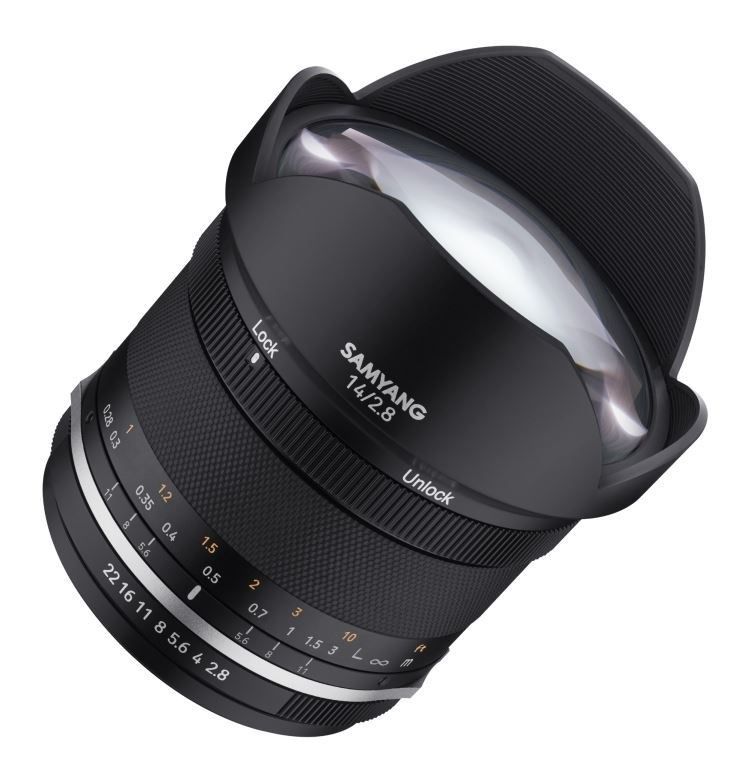Product Description
Samyang MF 14mm F2.8 Mk2 Ultra Wide Angle Lens
- Aperture Range: f/2.8 to 22
- Three HR Elements, Two ED Elements
- Aspherical & Hybrid Aspherical Elements
- Ultra Multi-Coating
- Manual Focus Design, Internal Focusing
- Focus Lock Ring, De-Click Switch
- Weather-Sealed Construction
- 9-Blade Diaphragm

The Samyang MF 14mm F2.8 Mk2 is an ultra-wide-angle, manual-focus lens with superb sharpness from corner to corner, even at its maximum wide-open aperture. The 115.7 deg wide angle of view is ideal for shooting landscapes, interiors, astrophotography etc. and the attached lens hood effectively blocks unwanted light.

The MF 14mm F2.8 Mk2 includes two completely new features: “Focus Lock” & “De-click”. You can lock the focus ring at a specific point, greatly improving precision and repeatability, especially useful in astrophotography and time-lapse shots. The de-clicked aperture option allows infinitely fine adjustment between F-stops. By rotating the silver ring from 'Click' to 'Free', you can adjust the aperture smoothly and precisely, to ensure exactly the right amount of light is captured. The 9-rounded aperture blades help to achieve excellent smooth and creamy bokeh in out of focus backgrounds.

The 9 aperture blades also provide clearly defined 'sunstars' when the aperture is stopped-down. Weather-sealing is located around the lens mount area to prevent infiltration of moisture and/or rain drops. This feature provides an additional layer of protection when shooting outdoors under adverse weather conditions.





















